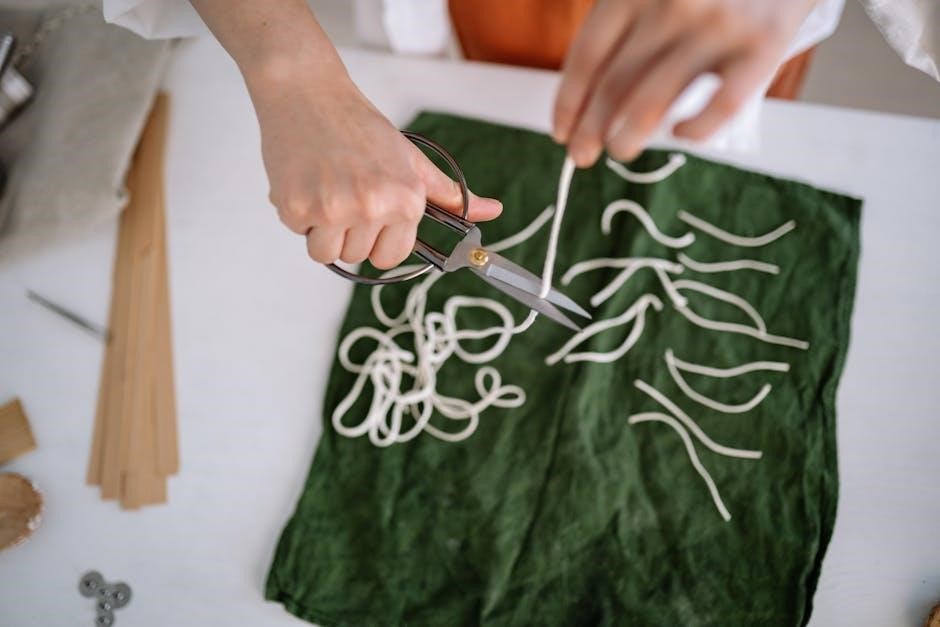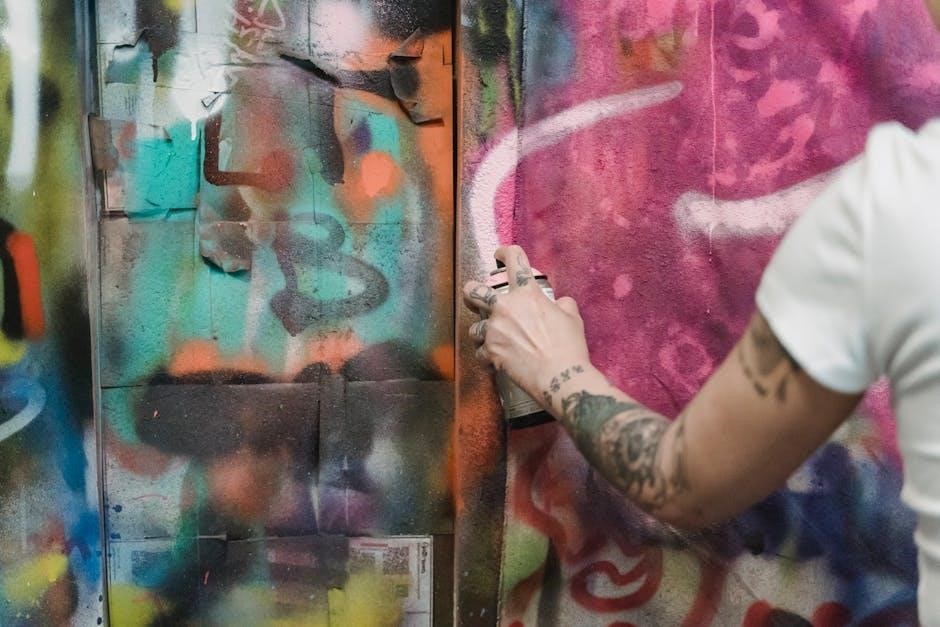Making a Murderer is a gripping docuseries that explores real-life crimes, sparking intense public debate․ It delves into the cases of Steven Avery and Brendan Dassey, examining their trials and the controversial evidence presented․ The series has become a cultural phenomenon, drawing millions of viewers worldwide and inspiring petitions for justice․ Its thought-provoking narrative challenges viewers to question the criminal justice system, making it a must-watch for true-crime enthusiasts․

1․1 Overview of the Docuseries
Making a Murderer is a Netflix docuseries that examines the high-profile cases of Steven Avery and Brendan Dassey, convicted of murder in Wisconsin․ The series, released in 2015, presents a detailed investigation into their trials, highlighting controversial evidence and legal battles․ It sparks intense public debate about guilt, innocence, and the fairness of the justice system․ The show’s narrative style and exclusive interviews create a gripping storyline, attracting millions of viewers worldwide․ Its impact led to widespread discussions, petitions, and renewed scrutiny of the cases, making it a landmark in true-crime storytelling․
1․2 The True-Crime Phenomenon
The true-crime genre has surged in popularity, captivating audiences with real-life mysteries and courtroom dramas․ Making a Murderer stands out as a pioneer, blending meticulous research with compelling storytelling․ Its success has inspired similar series, fueling public fascination with criminal investigations․ Viewers are drawn to the emotional depth and moral dilemmas, often sparking debates on justice and ethics․ The series’ impact extends beyond entertainment, influencing public perception of the legal system and prompting social movements․ This cultural shift reflects a broader societal interest in understanding crime and its consequences, making true-crime narratives a staple of modern media․
The Plot and Key Cases
The series focuses on Steven Avery and Brendan Dassey, convicted of murdering Teresa Halbach, exploring their cases, trials, and the controversial evidence used against them․
2․1 Steven Avery’s Case

Steven Avery’s case is central to the docuseries, highlighting his wrongful conviction for rape in 1985 and exoneration 18 years later․ After his release, Avery sought justice for the miscarriage of his case but became a suspect in Teresa Halbach’s murder․ The series examines the discovery of Halbach’s car, bloodstains, and other evidence linked to Avery․ Controversies arise over the reliability of forensic evidence and potential police misconduct, fueling debates about Avery’s guilt․ His case underscores systemic flaws in the criminal justice system, leaving viewers questioning his innocence and the fairness of his trial․
2․2 Brendan Dassey’s Case
Brendan Dassey’s case intertwines with Steven Avery’s, as he was also convicted in connection with Teresa Halbach’s murder․ Dassey, then a teenager, faced scrutiny for his confession, which many argued was coerced․ His limited intellectual capacity and suggestive interrogation techniques raised concerns about the reliability of his statements․ The series highlights the controversy surrounding his conviction, as his confession lacked physical evidence․ Dassey’s case sparked debates about juvenile justice and interrogation practices․ His story, alongside Avery’s, underscores the complexities of the criminal justice system and the challenges of proving innocence․

Legal and Investigative Aspects
The series examines the legal battles and investigative methods in Steven Avery and Brendan Dassey’s cases․ It highlights controversial evidence, trial procedures, and debates over fairness and justice․
3․1 The Trials and Evidence
The trials of Steven Avery and Brendan Dassey were highly scrutinized due to the controversial evidence presented․ Avery’s case centered around DNA findings and questionable police conduct, while Dassey’s confession was challenged for its reliability․ The prosecution relied on physical evidence, but the defense argued for potential planting of evidence․ The series highlights the legal strategies and the emotional impact on the defendants and their families, raising questions about the fairness of the justice system and the reliability of forensic evidence․
3․2 Controversies and Criticisms
The docuseries sparked intense debate over the fairness of the trials․ Critics argued that key evidence, such as the discovery of Steven Avery’s DNA on the victim’s car key, could have been planted by investigators․ Brendan Dassey’s confession was widely criticized as potentially coerced, raising concerns about police interrogation tactics․ Additionally, allegations of prosecutorial misconduct and bias within the judicial system further fueled public outrage․ These controversies led to widespread petitions for the defendants’ release and calls for judicial reform, highlighting the series’ impact on public perception of the criminal justice system․

Key Figures in the Documentary
The documentary centers on Steven Avery and Brendan Dassey, accused of murder, along with prosecutors and defense attorneys․ Their roles and conflicts drive the narrative, revealing legal and emotional battles․
4․1 Steven Avery
Steven Avery, a central figure in the series, was wrongly convicted of rape in 1985 and later exonerated by DNA evidence after serving 18 years․ His highly publicized case brought hope for justice until he was accused of murdering Teresa Halbach․ The series raises questions about the fairness of his second trial and whether he was wrongly convicted again․ Avery’s story has sparked widespread debate about the reliability of the criminal justice system and the possibility of police misconduct․ His legal battles and personal struggles are deeply explored in the documentary․
4․2 Brendan Dassey
Brendan Dassey, Steven Avery’s nephew, became a key figure in the documentary after being convicted of murder alongside Avery․ His case drew widespread attention due to his learning disabilities and the controversial interrogation techniques used by authorities․ Dassey’s confession, which many argue was coerced, played a pivotal role in his conviction․ The series highlights the debate surrounding his guilt and the fairness of his trial․ Brendan’s story has evoked strong emotions, with many viewers questioning the justice system’s treatment of individuals with intellectual challenges․ His narrative remains central to the broader discussion of the case․
4․3 The Prosecutors and Defense
The prosecutors, led by Ken Kratz, presented a case heavily reliant on physical evidence and testimony, while the defense, representing Steven Avery and Brendan Dassey, argued for their clients’ innocence․ Avery’s attorneys, Dean Strang and Jerome Buting, challenged the credibility of the prosecution’s evidence, suggesting potential police misconduct․ Dassey’s lawyers faced an uphill battle due to his coerced confession․ The series highlights the legal strategies and controversies surrounding both sides, sparking debates about justice and fairness․ The roles of these figures remain pivotal in understanding the case’s complexities and the broader implications for the criminal justice system․
Public Reaction and Impact
Making a Murderer sparked intense public debate, with millions signing petitions for Steven Avery and Brendan Dassey’s freedom․ The series fueled widespread outrage and discussions about justice, fairness, and the criminal justice system, becoming a cultural phenomenon and inspiring social movements․

5․1 Media and Viewer Response
Making a Murderer garnered widespread critical acclaim and viewer engagement, sparking intense debates about justice and fairness․ The docuseries became a cultural phenomenon, with millions binge-watching and discussing its explosive revelations․ Viewers expressed outrage over the controversial evidence and legal tactics, while others empathized with Steven Avery and Brendan Dassey’s plight․ The series’ gripping narrative and emotional depth resonated deeply, turning it into a must-watch sensation․ Its impact extended beyond entertainment, influencing public perception of the criminal justice system and inspiring widespread advocacy for the defendants․

5․2 Petitions and Social Movements
The release of Making a Murderer sparked widespread outrage, leading to massive petitions demanding justice for Steven Avery and Brendan Dassey․ Millions of viewers signed appeals calling for their exoneration, while social media campaigns like #FreeStevenAvery and #FreeBrendanDassey gained momentum․ The series inspired grassroots movements, with supporters organizing rallies and fundraising efforts․ The public’s reaction pressured authorities to reconsider the cases, highlighting the power of media in shaping legal discourse․ These efforts underscored the documentary’s impact, transforming it into a catalyst for social change and a symbol of the fight for criminal justice reform․

Viewing Guide Tips
Watch Making a Murderer on Netflix for a gripping true-crime experience; Discuss the series with friends or online forums to deepen your understanding of the cases and controversies․
6․1 Where to Watch
Making a Murderer is available to stream on Netflix, offering a convenient way to follow the series․ With multiple seasons, viewers can explore the cases of Steven Avery and Brendan Dassey in depth․ The platform provides access to all episodes, allowing fans to binge-watch or pace their viewing experience․ Additionally, the series has gained international recognition, making it accessible to a global audience․ For true-crime enthusiasts, Netflix remains the primary destination to witness the compelling and controversial storytelling of Making a Murderer․
6․2 How to Discuss the Series
Engaging in discussions about Making a Murderer requires a balanced approach․ Encourage open dialogue by sharing personal reactions and insights․ Raise questions about the criminal justice system and the evidence presented․ Foster a respectful environment where differing opinions are welcomed․ Highlight key moments and controversies to spark deeper conversation․ Consider hosting viewing parties or online forums to facilitate group discussions․ Approach the topic with empathy, as it involves real people and their lives․ By fostering thoughtful dialogue, you can create a meaningful exchange of ideas about the series and its implications․

